Abrolhos Whales
|
Co-Captain, Florian is standing next to the jib (the forward sail). 3 Wildlife catamaran crew are helping him spot Humpback Whales (Latin: Megaptera novaeangliae) .
We visited the Brazilian off-shore "Archipelago Abrolhos" during the Humpback Whale breeding season.
The current stock (number of whales returning to bread) is approximately 15 percent of the original, 200 years ago.
Much is being done by scientists to study and protect whales. Humpback Whales have been under long term study since the 1970s.
|
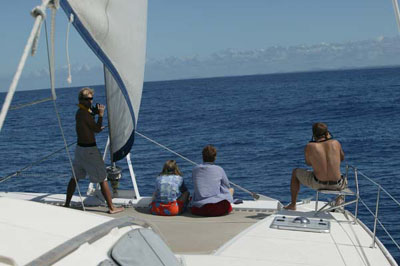 |
|
"There she blows!" We see a fountain of water from the whale's water spout. The animal exhales with a roar like noise, water blasts 10 feet into the air. We are stunned by the beautiful arch of its back and the pronounced shape of its dorsal fin (the fin on its back).
|
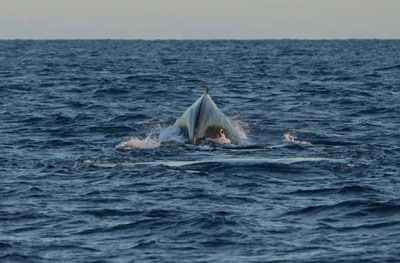 |
|
In the foreground is crew member, Daniel Michahelles. We sailed silently past this group of whales seen in the upper right hand side of the picture.
|
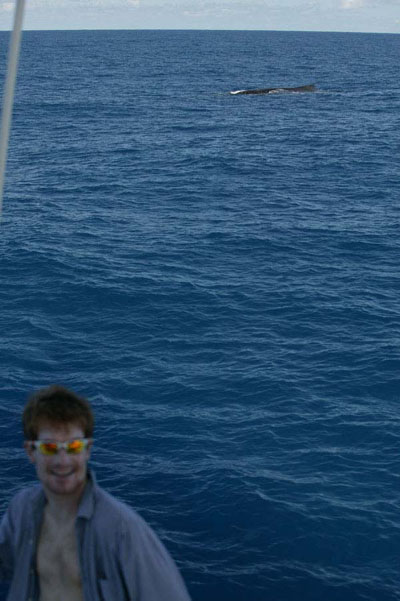 |
|
Migration:
The Humpback Whale is best known for its acrobatic displays and its haunting songs underwater. The migration of this species from summer feeding areas in colder higher latitudes (such as the northern Arctic and southern Antarctica) to warmer tropical mating and calving grounds (such as Abrolhos, Brazil, where we took these photos) is the longest of any mammal. Their yearly round-trip journey is approximately 10,000 miles.
|
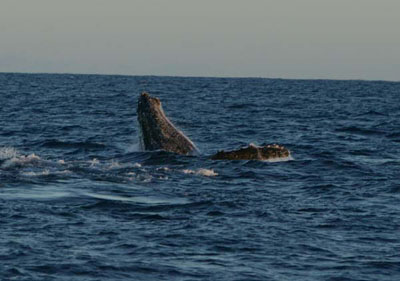 |
|
Migration:
Food:
Hupbacks feed on krill and a variety of small schooling fish. They feed alone or cooperatively, lunging into schools of prey. Many populations use a bubble-feeding technique, blowing of bubbles to concentrate and trap prey. Bubble nets consist of a circle that enclose a central space.
|
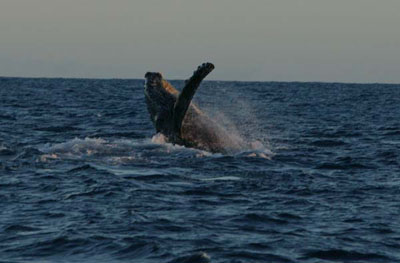 |
|
Flippers:
The Humbpack whale has the longest flippers of all whales. The whales's Scientific Latin name "Megaptera novaeangliae" actually translates to "big wing of new England"
|
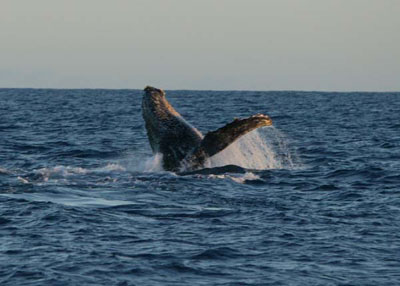 |
The picture on the right is a typical reentry into the water. The whales beats the water hard with its powerful flippers.
Read more about Humpback whale breading behavior and find out what initiates their acrobatic displays.
|
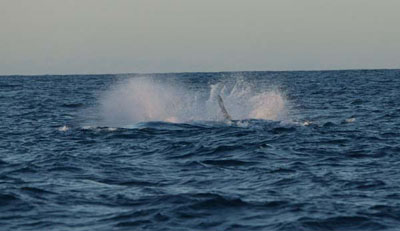 |